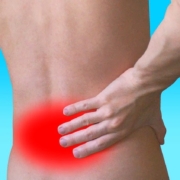Functional Movement: An Antidote to Chronic Pain
The human body is designed to move freely and heal itself at any age. But unconscious neural patterns can interfere with the body’s natural self-healing process and lead to chronic pain.
Often, out of our awareness, our body and brain gets disorganized. When this happens, we may experience problems with self-healing caused by a sluggish sensory motor system.
This unconscious process is what Thomas Hanna calls “Sensory Motor Amnesia.” He suggests that gradually, humans lose their memory of how to efficiently coordinate certain muscles. When this occurs, the body then operates on a type of auto-pilot. The lack of awareness is often due to sensory nerves which are not properly sensing what the muscles are doing. This malfunction in the sensory motor system can cause fundamental deterioration in our movement and quality of life.
In other words, pain may be a result of the way one moves, whether one overuses, underuses and misuses some parts of their body. However, with a deeper sense of awareness and proper communication with the brain, it’s possible to recover simple, inherent ways of moving that release stuck neuro-pathways and alleviate pain and symptoms.

What Is Functional Movement?
Functional movement is when each body part is being used optimally, resulting in organic ease physically, emotionally and mentally. In other words, enhanced functional movement accesses a wide range of direct benefits, including:
• a balanced, aligned, pain free body,
• fluid and flexible movement
• clear thinking
• comfortable and pleasurable emotions
• a peaceful, purposeful, powerful Self
Functional movement hydrates, nourishes, and revitalizes by restoring mobility, increasing oxygen and blood flow, and eliminating physical and emotional pain in a holistic, integrated way.
Re-educating one’s body begins with the brain, the body’s operating system. When one understands that physical, emotional and mental habits are responses to one’s unique history, changing those habits becomes possible. The habits that contribute to dysfunction and pain can be unlearned, and pain can be lessened.
In other words, functional movement can be an antidote to chronic pain.
How Does Functional Movement Heal?
Those interested in learning more about this cutting-edge, non-invasive approach may choose to read “The Brain’s Way of Healing,” by Norman Doidge, M.D. This recent New York Times bestseller offers a deep dive to the viability of changing habits as a pathway to healing and stopping pain permanently without pills, shots or surgery.
Are you ready to find a brain-body antidote for your chronic pain? Let’s talk. Email Judy.
 Judy Ban Greenman
Judy Ban Greenman
Judy Ban Greenman is a Natural Pain Relief and Empowerment Coach. She helps people access physical and emotional freedom, so they can transform struggle, reduce symptoms, move freely, and live fully with ease, choice and connection. Learn more about her work at Body Brain Freedom, https://bbfree.co/.




